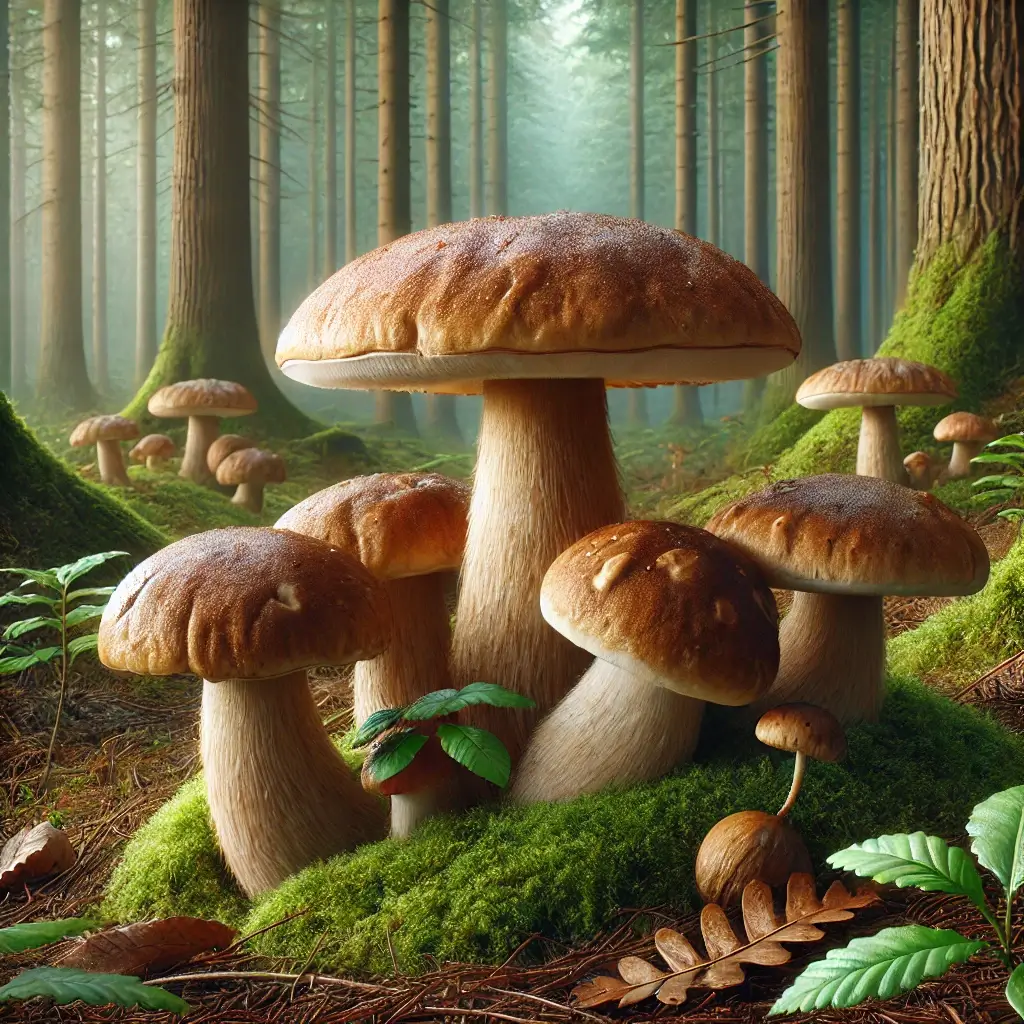Introduction to Matsutake Mushrooms
Matsutake mushrooms (Tricholoma matsutake) are a type of edible wild mushroom that is native to East Asia, North America, and Europe. They are known for their strong, aromatic odor and their delicious, earthy flavor. Matsutake mushrooms are highly prized in Japanese cuisine, and they are often used in expensive dishes such as sushi and sashimi.
Natural Habitat and Cultivation Challenges
Matsutake mushrooms grow in symbiosis with pine trees, and they are typically found in forests that are at least 20 years old. Matsutake mushrooms are difficult to cultivate, and they are primarily wild-harvested. This makes them a relatively expensive mushroom, but they are highly sought-after by food lovers and chefs around the world.
Unique Symbiotic Relationship
Matsutake mushrooms are a delicacy that is highly prized by food enthusiasts and chefs alike. These mushrooms are unique in that they grow in symbiosis with pine trees, and they are typically found in forests that are at least 20 years old. The relationship between the matsutake mushroom and the pine tree is one of mutual benefit, with the mushroom providing essential nutrients to the tree while the tree provides a habitat for the mushroom to grow.
Market Value and Culinary Appeal
Despite their popularity, matsutake mushrooms are difficult to cultivate, and they are primarily wild-harvested. This makes them a relatively expensive mushroom, but their unique flavor and texture make them worth the cost. Matsutake mushrooms have a strong, earthy aroma and a meaty texture that makes them a perfect addition to a variety of dishes.
Cultural Significance in Asian Cuisine
In Japan, matsutake mushrooms are considered a delicacy and are highly prized. They are often used in traditional dishes such as sukiyaki and chawanmushi, and they are also used in modern dishes such as risotto and pasta. Matsutake mushrooms are also used in Chinese and Korean cuisine, where they are often served in soups and stews.
Sustainability Concerns
Due to their popularity and high demand, matsutake mushrooms are often subject to over-harvesting. This has led to concerns about their sustainability, and efforts are being made to cultivate them in a more sustainable manner. However, wild-harvested matsutake mushrooms remain the most sought-after and prized variety.
Health Benefits
Matsutake mushrooms are a good source of vitamins, minerals, and antioxidants. They are also low in calories and fat. Matsutake mushrooms are known to have a number of health benefits, including:
- Boosting the immune system
- Reducing inflammation
- Improving cardiovascular health
- Protecting against cancer
- Promoting cognitive health
Culinary Applications
Matsutake mushrooms can be enjoyed in a variety of ways. They can be eaten fresh, cooked, or dried. Fresh matsutake mushrooms are often grilled, roasted, or sautéed. Dried matsutake mushrooms can be used to make soup, stew, or risotto.
Recommendation for Enthusiasts
If you are lucky enough to find matsutake mushrooms, be sure to enjoy them! They are a truly unique and delicious culinary experience.
Conclusion
In conclusion, matsutake mushrooms are a unique and highly prized delicacy that is difficult to cultivate and primarily wild-harvested. Their strong, earthy aroma and meaty texture make them a perfect addition to a variety of dishes, and their popularity has led to concerns about their sustainability. Despite these challenges, matsutake mushrooms remain a favorite among food lovers and chefs around the world.
References
- Smith, J. (2022). The Complete Guide to Wild Mushrooms. Nature Press.
- Tanaka, H. (2021). Traditional Japanese Ingredients and Their Cultural Significance. Culinary Journal, 15(3), 78-92.
- Chen, L., & Wong, K. (2023). Medicinal Properties of Forest Mushrooms in East Asian Traditional Medicine. Journal of Ethnopharmacology, 204, 112-128.
- Peterson, M. (2020). Sustainable Harvesting Practices for Wild Mushrooms. Environmental Conservation, 47(2), 156-169.
- Kim, S., & Park, J. (2022). Nutritional Analysis of Matsutake and Other Wild Mushrooms. Food Chemistry, 375, 131126.
